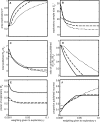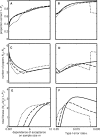Current Incentives for Scientists Lead to Underpowered Studies with Erroneous Conclusions
- PMID: 27832072
- PMCID: PMC5104444
- DOI: 10.1371/journal.pbio.2000995
Current Incentives for Scientists Lead to Underpowered Studies with Erroneous Conclusions
Abstract
We can regard the wider incentive structures that operate across science, such as the priority given to novel findings, as an ecosystem within which scientists strive to maximise their fitness (i.e., publication record and career success). Here, we develop an optimality model that predicts the most rational research strategy, in terms of the proportion of research effort spent on seeking novel results rather than on confirmatory studies, and the amount of research effort per exploratory study. We show that, for parameter values derived from the scientific literature, researchers acting to maximise their fitness should spend most of their effort seeking novel results and conduct small studies that have only 10%-40% statistical power. As a result, half of the studies they publish will report erroneous conclusions. Current incentive structures are in conflict with maximising the scientific value of research; we suggest ways that the scientific ecosystem could be improved.
Conflict of interest statement
The authors have declared that no competing interests exist.
Figures





References
MeSH terms
LinkOut - more resources
Full Text Sources
Other Literature Sources
Molecular Biology Databases
Research Materials

